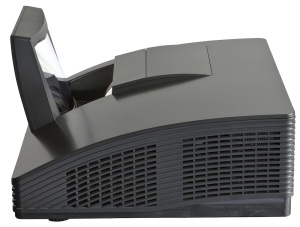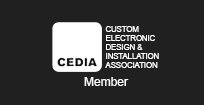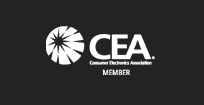Introduction to the Runco LightStyle LS-100d Projector
For a truly immersive home theater experience, nothing compares to a large image that fills your field of view. Unfortunately many of us don’t have a room that will work for a projector due to space and throw limitations and are forced to make do with a far smaller plasma or LCD display. Runco has a solution for those challenging situations with their LS-100d, a short throw, LED-based projector capable of producing a 100″ image while being placed right up against the wall.
Design and Setup of the Runco LightStyle LS-100d Projector
The LS-100d manages to pull off this feat with a specially designed curved mirror that takes the image off the lens and projects it onto the screen. This design means that the LS-100d lacks any lens zoom or shift controls, as those would not be able to interact with the mirror assembly. With this setup the LS-100d can provide an image between 84″ and 100″ in size, depending on how close you are able to place it to your screen. Focus controls are available, but the design of the LS-100d makes all other lens controls unnecessary.
Providing the image is a DLP chip powered by an LED light engine. The use of an LED engine means you won’t ever have to worry about replacing a bulb over the life of the projector, and the light output should not have a noticeable decrease over time. It also prevents the dreaded rainbow effect that some people suffer from with DLP-based projectors. With the recommended 1.0 gain screen, the projector is capable of close to 13 ftL of light off an 84″ screen after calibration, and close to twice that with maximum output.
The d at the end of the LS-100d model designation indicates that the image processing controls for the LS-100d is contained in the external DHD4 controller. The DHD4 has all of the inputs one could require with 4 HDMI, a Component, 3 Composite and 2 YPbPrHV inputs that allow for RGB or Component video. The DHD4 also has dual HDMI outputs, allowing you to run one to the projector and one to your surround sound processor, allowing the DHD4 to handle all the video and processing.
The DHD4 provides for full video processing, including video scaling and full ISFccc controls for custom installers. These controls are locked out from users, but allow for ISF Day and Night modes to be setup, and these are unique to every input, allowing the LS-100d to be truly calibrated for every source component to get the best performance. The initial settings out of the box were very far off the HDTV standards, but once the Rec 709 color gamut is selected in the calibration controls, the settings were nearly spot on without any additional adjustments. For those that want even better controls, there are full HSL controls available for all six primary and secondary colors, as well as white balance and gamma settings. Keeping the controls separate from the projector itself makes setup much easier, as you only need to run a pair of cables from the DHD4 to the LS-100d, making a custom install easier.
On that note, the Runco will be sold by a custom installer which will save you a lot of aggravation as the radical mirror assembly means that installation and placement is very hard to get right. Setting it up with my screen meant getting the height and distance from the screen just right to get a 96″ 16:9 image, and then making sure it was not off-axis at all. Any small alignment issues were very noticeable as it caused a radical shift in geometry. As such this is a projector you will certainly want to be permanently installed with a screen and not attempt to move from room to room.
The Runco LightStyle LS-100d Projector In Use
Once positioned correctly I fired up the LS-100d and started by watching a bit of Cars 2. As I hadn’t adjusted the CMS yet, I was amazed to see the colors that were jumping off the screen at me. LEDs can produce a much wider color gamut than traditional bulbs, and so there were shades of red, green, and blue that I hadn’t seen on a home projector before. It was very inaccurate, but it was also eye-popping to see that a projector could produce these colors, and really with CGI content the extra pop was nice. After admiring the colors for a bit, I set the CMS to Rec 709 and Cars 2 looked normal again.
With the opening scene on the oilrig, blacks were a bit darker than I was used to with a DLP projector. I’m not sure if the LEDs allow for this, or if it is that Runco uses a much higher quality glass lens instead of plastic that has less light bleed, but the letterboxing bars blended into the edge of the screen much better than usual. Geometry issues from the mirror setup were not noticeable in regular viewing, nor were any other side effects of the mirror setup.
As you would expect with a DLP, the image was razor sharp. CGI can be good for evaluating the sharpness, as there is no possible issue with the focus or a bad film transfer to introduce a soft image. Cars 2 looked great, with all the details coming across. DLPs are also fantastic with motion resolution and here it looked superb as well. There was no smearing or blurring of the image, as the cars flew around the track in Japan and Italy, and with the LEDs also no rainbows visible.
With The Fifth Element, skin tones from Bruce Willis and Milla Jovovich were spot on without excessive reddish or sunburnt tones, but the rest of the color palette certainly popped off the screen. The last DLP I had around was an earlier Samsung RPTV model and not an LED based projector, but I never had colors that were as accurate yet vivid as these. On Drive, the shadow detail was rendered well, which is very important in a film as dark as this, though the nighttime aerial shots of Los Angeles lacked some of the pop that projectors with higher native contrast, instead of using an iris, can manage. All 24p content was shown at 48 Hz, and despite my worries about the lower rate I had no issues with the image showing flicker or any other artifacts.
Watching Casino Royale, the opening scene had good, rich shadow detail and blacks that blended into the letterbox bars and edges of the screen. Once the location moves to the Bahamas, the LS-100d can put out stunning, rich blue water tones that I think most displays would be hard pressed to match. Even though when calibrated an LED display should look the same as a conventional display, the shade of water from the LED seemed to be a bit different. Letterboxing bars were not visible at all, and tones that were supposed to look neutral and natural did, while the bright water and other items in the Bahamas had a ton of pop to them.
After a week, I got quite used to the LS-100d being at the front of the room, where I didn’t walk in the light path every time I stood up or moved around. For a smaller room where it would be used, this makes it easier for your guests to move around while watching something without disturbing the image for everyone else. It also makes it a far better solution for those who would play motion-based video games, like the Wii of Xbox Kinect, as you don’t constantly interfere with the projector. That LED lights are able to power up and run in seconds instead of minutes, and that you don’t shorten their life by turning the projector on for 30 minutes to watch a TV show makes the LS-100d better suited to a living room than most projectors would be.
With the ability to turn the LS-100d on and off and not worry about shortening the life of the bulb, I was able to treat it more like a TV. I’d turn it on to watch an episode of a TV show, or for 30 minutes of a movie, instead of having to ensure I had a long block of time so as not to waste my bulb hours. This ability lets the LS-100d operate more like a TV in a living room or other common setting instead of only as a projector for when you have a lot of time to sit down and watch a full movie. The LS-100d can easily work as a typical projector, but its design and setup allows it to also work as something more.
Conclusions About the Runco LightStyle LS-100d Projector
I’m sure some people are still thinking “$19,000 for a projector that only does a 100″ image?” but that isn’t the reason for the LS-100d to exist. Some of us can’t fit a typical projector into our rooms. Even if we could afford an 85″ or 103″ flat panel display it might not physically be able to get into a room or be supported by the wall. The LS-100d lets you install a true home theater sized screen almost anywhere you want and be able to fill it as long as you have the wall space.
If you have the space for a traditional projector and don’t need the optical tricks that Runco uses with the LS-100d, they have plenty of other projectors you can look into. If you always wanted to have that movie theater in your home, but never had the space to make it work, the LS-100d might be able to solve that for you, and put out an image that looks fantastic. The Runco LS-100d is a wonderful product that fills a niche of the home theater market very successfully.












